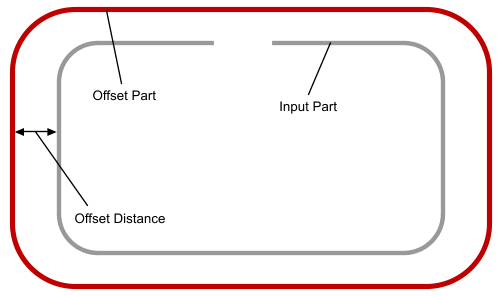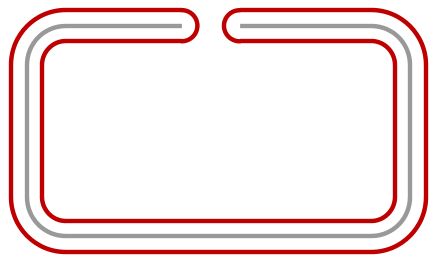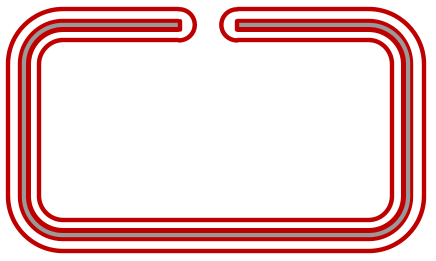Offset Parts
This operation generates a surface on the outside of parts, at a specified distance away from the part surfaces. The offset operation also supports thin-walled structures known as shells.
The offset operation creates an offset part that you can use in overset meshes and volume controls to closely follow the contours of a geometry.
While there is no minimum size you can specify, as the offset distance decreases, so also does the smallest mesh size applied to the resulting offset surface. Very small distances can be computationally expensive.


Inputs to the offset operation can be overlapping or intersecting. The inputs can be solid bodies as well as sheet bodies.
Offset Parts Properties
| Input Parts | Specifies the parts to offset. |
| Distance | Specifies the distance to offset the part surfaces. |
| Include Original Surface | When activated, includes
the original part surfaces in the offset to create a closed region
around the original part. Typically, you include the original parts if you want to generate a mesh on the outside of parts. For this reason, the offset operation automatically generates contacts between the offset part and the original input parts. Surfaces on the original parts that have contacts or are baffles are excluded from the offset part. If you are using a shell part to create an offset part, the default behaviour of the operation is to create an offset surface around the part at a specified distance. However, if you activate the Include Original Surface option, then the front surface of the shell is included in inherited surfaces of the output part. This surface is set as a baffle, and the two surfaces of the baffle will be in contact with the original input shell part. For more information on shells, see Creating Parts-Based Shells. |